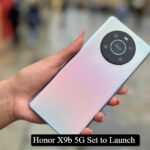As mobile technology rapidly changes, smartphones create anticipation surrounding each release and their features. No exception can be seen here than Samsung Galaxy Z Fold 6, the latest iteration in their innovative foldable lineup. Amidst reports speculating of an upgrade in terms of camera capability akin to that seen with Galaxy S24 Ultra (200MP main sensor), however this move seems likely to keep its 50MP sensor. This decision has ignited debate as to the best combination between maintaining sleek design while improving camera capabilities.
The Rumor Mill: Expectations vs. Reality
Samsung had set high hopes when speculation of a 200MP main camera sensor for the Galaxy Z Fold 6, inspired by its debut in the S24 Ultra, began swirling. Such a substantial upgrade piqued interest among photography fans as it offered up hope that such performance might become part of future Samsung foldable devices – yet recent insights from GalaxyClub, an influential source within Samsung community suggests otherwise; instead it appears likely that Galaxy Z Fold 6 may stick with 50MP sensor, sparking disappointment and further questioning on Samsung’s strategy regarding foldable devices in general.
Design vs. Performance: A Delicate Balance
At the core of it all lie foldable phones’ design challenges: Samsung’s goal to slim down its Z Fold 6 to around 11mm when closed presents challenges when trying to integrate an advanced 200MP sensor – though an amazing technological feat; more space must be available not just for itself but for optics and stabilization mechanisms as well.
The Challenge of Incorporating a Larger Sensor
Integrating an extremely large 200MP sensor such as that found on the Galaxy S24 Ultra into a foldable design presents several difficulties. Larger sensors require longer focal lengths and hence produce more pronounced camera bumps, impacting not only aesthetics but ergonomics and overall form factor as well – this may prove too significant of a sacrifice in sleekness and portability for some devices.
The OnePlus Open Example: A Case Study
OnePlus Open’s situation illustrates this conundrum well; although housing a smaller 64MP sensor, its camera module protrudes noticeable due to the sensor size. Adopting a bulkier setup such as its 200MP sensor could require redesign changes which compromise its streamlined appeal and could compromise it even further.
The Evolution of Design Priorities
Samsung’s design philosophy for its Galaxy Z Fold series has always centered on pushing the limits of what foldable technology can achieve, including making hard choices about which features to prioritize and which compromises to accept. While camera quality remains key in any modern smartphone, what distinguishes Z Fold series phones is their foldability and the versatility it affords its users.
Balancing Act: Sleekness vs. Camera Prowess
Samsung appears to be prioritizing form factor and design over any significant upgrade of camera hardware; though this doesn’t necessarily indicate decreased camera performance – they have long proven they can extract maximum performance out of hardware through software optimizations and image processing algorithms.
What to Expect from the Galaxy Z Fold 6
As we close in on Samsung’s official unveiling of the Galaxy Z Fold 6, it becomes evident that they are carefully considering consumer demands and technical feasibility when choosing features for this foldable phone. Their decision to retain 50MP sensor would demonstrate their commitment to using foldables as cornerstone of future device strategy.
The Potential for Future Upgrades
Remember, technology and design landscape are ever-evolving; future iterations of the Galaxy Z Fold may feature larger camera sensors due to design alterations or emerging solutions to overcome current limitations.
Embracing the Foldable Future
The Samsung Galaxy Z Fold 6 represents more than simply the latest advancement in foldable technology; it symbolizes an ongoing dialogue between innovation and practicality. Although its camera system plays an essential part of smartphone use, Samsung’s approach with regard to this product underscores a larger vision for mobile technology–in which foldables remain relevant despite incremental upgrades; we eagerly anticipate its official release and consider its discussion around its camera as providing insight into priority settings shaping its development in terms of prioritizing needs versus challenges shaping mobile.





